roll
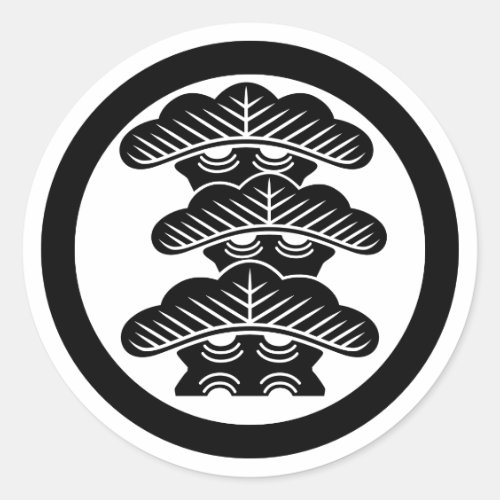
[Family Crest] Right-align 3tier pine tree w/round Classic Round Sticker
This family crest depicts three tiers of pine branches stacked vertically within a circle, with the center tier shifted to the right.
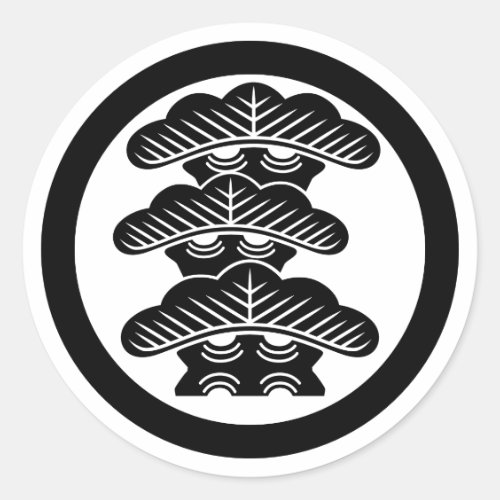
[Family Crests] Left-align 3tier pine tree w/round Classic Round Sticker
This family crest depicts three tiers of pine branches stacked vertically within a circle, with the center tier shifted to the left.
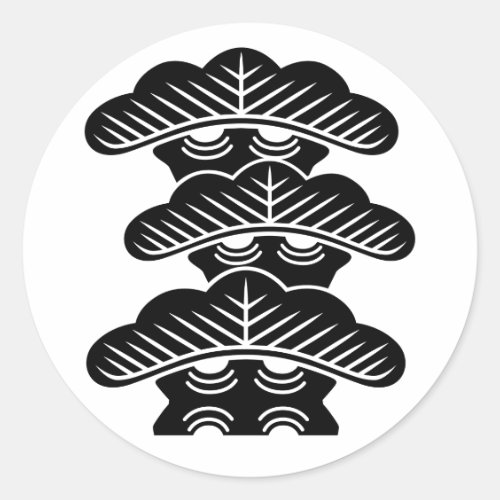
[Family Crests] Right-aligned 3tiered pine trees Classic Round Sticker
This family crest depicts three tiers of pine treetops, with the middle tier shifted to the right.
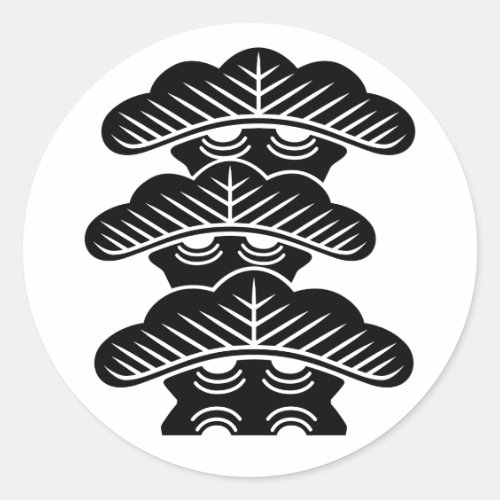
[Family Crests] Left-aligned 3tiered pine trees Classic Round Sticker
This family crest depicts three tiers of pine treetops, with the middle tier shifted to the left.
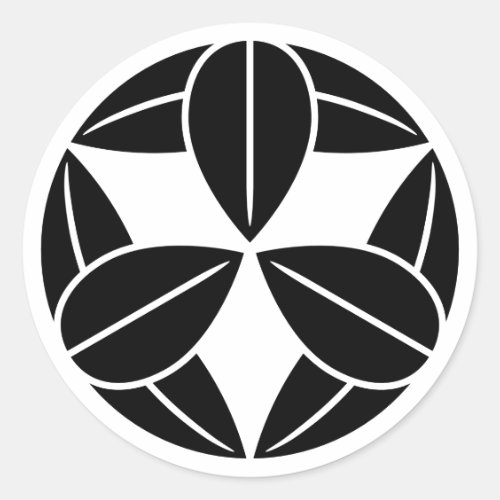
[Family Crests] Nine bamboo leaves Classic Round Sticker
This family crest depicts three bamboo leaves arranged in a set, with three such sets gathered and drawn in a circular pattern with their bases joined.
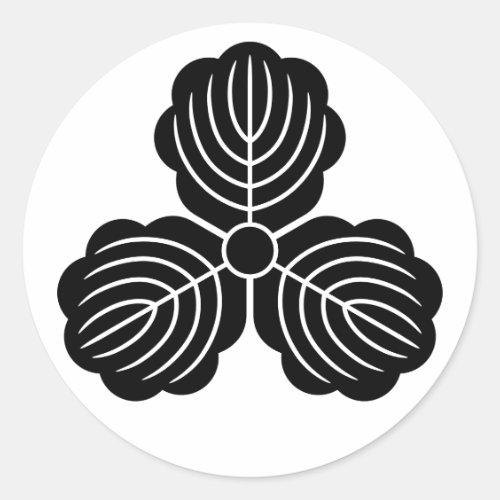
[Family Crests] three ork leaves Classic Round Sticker
This family crest depicts three broad oak leaves spread out in three directions. Oak leaves were revered as sacred since ancient times, having been used as vess
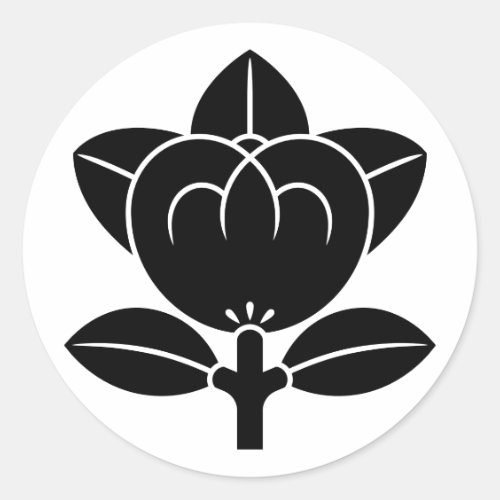
[Family Crests] Tachibana flower Classic Round Sticker
This family crest depicts the fruit, leaves, and flowers of the tachibana, an evergreen shrub of the citrus family, rendered as an emblem.
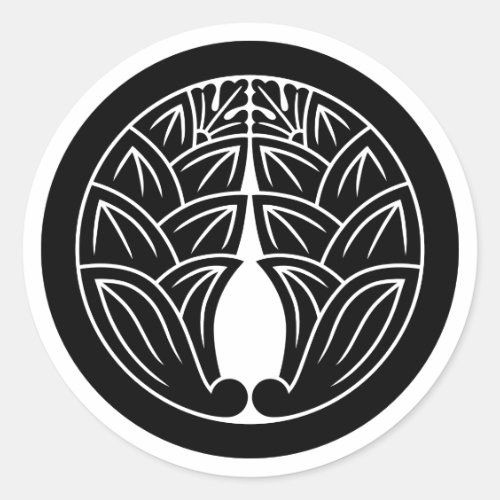
[Family Crests] 2 symmetrical Jpn gingers w/round Classic Round Sticker
A family crest featuring a circle drawn around two symmetrical Japanese Gingers.

[Family Crests] 2 symmetrical holly leaves w/round Classic Round Sticker
A family crest featuring a circle drawn around two symmetrical holly leaves. Holly leaves are considered sacred trees that ward off demons, as seen in Setsubun

[Family Crests] Crossed hawk feathers with circle Classic Round Sticker
A family crest depicting hawk feathers overlapping diagonally within a circle, with the left side facing upward.

[Family Crests] Crossed hawk feathers Classic Round Sticker
This family crest depicts hawk feathers overlapping diagonally, with the left side positioned upward.

[Family Crests] Right-rotating Mitsu-domoe Classic Round Sticker
This ancient pattern, also found in Jōmon period sites, is generally believed to represent thunder. This is a clockwise “Mitsudomoe.” Clockwise flow is traditio

[Family Crests] Threeleaf arrowhead with circle Classic Round Sticker
This family crest features a circle drawn around a Threeleaf arrowhead (Omodaka) crest. The Threeleaf arrowhead (Omodaka) crest depicts a single Threeleaf arro

[Family Crests] Threeleaf arrowhead Classic Round Sticker
The most basic design of the Threeleaf arrowhead (Omodaka) crest. It depicts a single Threeleaf arrowhead (Omodaka) leaf bearing five flowers on both sides, arr

[Family Crests] Left-rotating Mitsu-domoe Classic Round Sticker
This ancient pattern, also found in Jōmon period sites, is generally believed to represent thunder. The term “mitsudomoe” specifically refers to this left-rotat

[Family Crests] 16 petals chrysanthemum with round Classic Round Sticker
This family crest features a chrysanthemum with sixteen petals surrounded by lines of standard thickness. Flowers symbol and graphics at old age.

[Family Crests] back-side 16 petals chrysanthemum Classic Round Sticker
This family crest depicts a chrysanthemum with sixteen petals drawn from the reverse side. Flowers symbol and graphics at old age.

[Family Crests] Genji clan wheel Classic Round Sticker
Flowers symbol and graphics at old age. A family crest inspired by the imperial palanquin of old.

[Family Crests] Deformed Kaji leaf Classic Round Sticker
This family crest depicts a kaji leaf with a deformed petiole. Such logo-like designs are called “Kamon” in Japan.

[Family Crests] Gentian Flowers and Bamboo Classic Round Sticker
Flowers symbol and graphics at old age. This family crest depicts five bamboo-like leaves spread downward, with three gentian flowers drawn above them.

[Family Crests] Oni Kaji leaf Classic Round Sticker
This family crest features a kaji leaf pattern slightly different from the standard design, with pointed edges around the leaf. Such logo-like designs are calle

[Family Crests] Kaji leaf with circle Classic Round Sticker
This family crest features a circle drawn around a pattern of kaji leaves. Such logo-like designs are called “Kamon” in Japan.

[Family Crests] Rising wisteria with circle Classic Round Sticker
it's said MaruniAgarifuji, in Japanese as Family crests. Flowers symbol and graphics at old age.
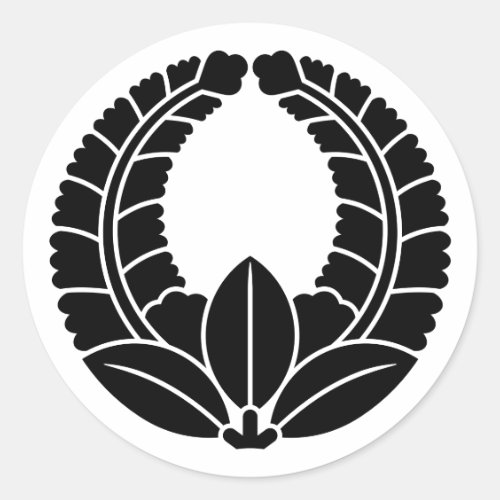
[Family Crests] Rising wisteria Classic Round Sticker
it's said Agarifuji, in Japanese as Family crests. Flowers symbol and graphics at old age.

[Family Crests] Orthodox wisteria Classic Round Sticker
it's said Sagarifuji, in Japanese as Family crests. Flowers symbol and graphics at old age.

[Family Crests] Plum blossom Classic Round Sticker
Flowers symbol and graphics at old age. The white family crest is hidden. Click the “Edit this design” button to display the white family crest, hide the black
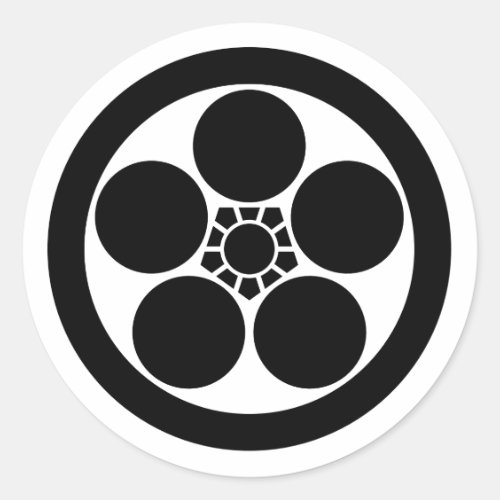
[Family Crests] Plum Flower (Umebachi) with circle Classic Round Sticker
Flowers symbol and graphics at old age. The white family crest is hidden. Click the “Edit this design” button to display the white family crest, hide the black

[Family Crests] Kikyo flower inside a circle Classic Round Sticker
Japanese says "Kamon". Kikyo(bellflower) was used as a "flower fortune-telling the good and bad". It is also considered to be one of the rep

[Family Crests] Decorated Plum Flower Classic Round Sticker
Flowers symbol and graphics at old age. The white family crest is hidden. Click the “Edit this design” button to display the white family crest, hide the black

Merry Christmas in 8 langs and Happy Holiday Star Sticker
Merry Christmas is also available in Spanish, French, Japanese Katakana, German, Dutch, Norwegian, and Portuguese, hidden on the same layer. “Happy Holidays” is
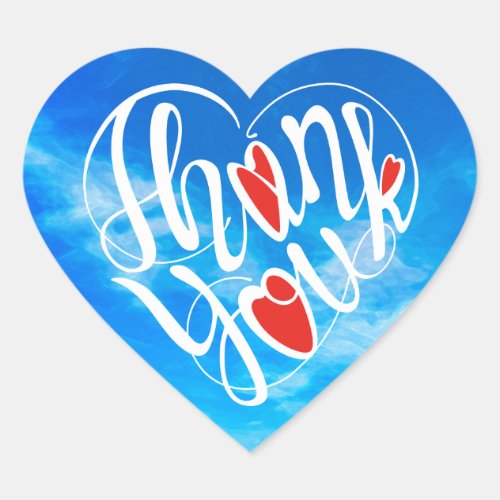
Thank you & hearts in 17 langs as heart shapes heart sticker
The design is based on the heart shape of the word “thank you” and some hearts in 17 languages, 20types. Each “thank you” is polite, formal, or more emphatic th
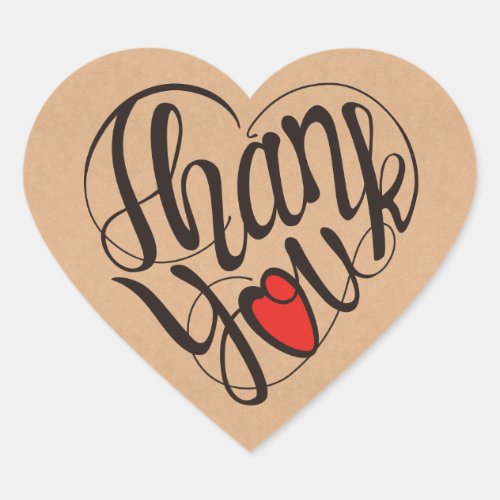
Thank you & heart in 17 langs as heart shapes heart sticker
The design is based on the heart shape of the word “thank you” and a heart in 17 languages, 20types. Each “thank you” is polite, formal, or more emphatic than a
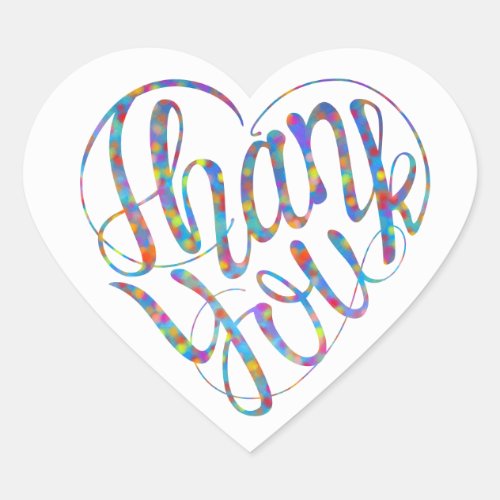
Thank you in 17 langs as heart shapes heart sticker
The design is based on the heart shape of the word “thank you” in 17 languages, 20types. Each “thank you” is polite, formal, or more emphatic than a general tha
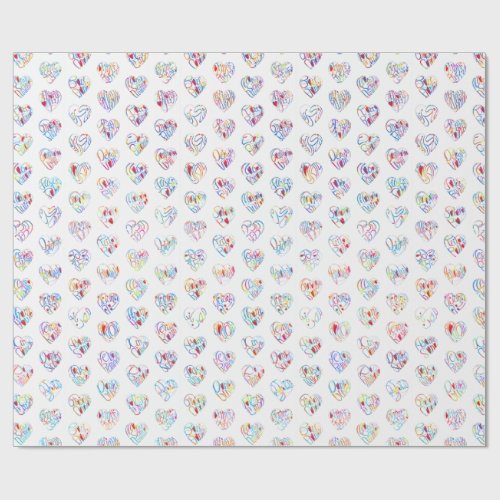
Thank you & hearts in 44langs as DC♡shaped pattern Wrapping Paper
The design is based on heart-shaped die cutting designs of thank you and some hearts from 44 different countries. Each “thank you” is polite, formal, or more em
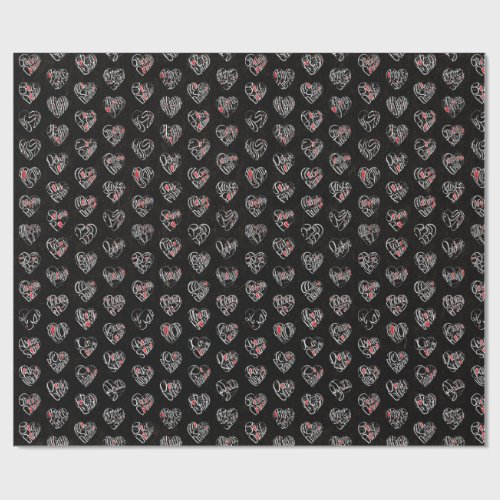
Thank you & hearts in 44langs as WH♡shaped pattern Wrapping Paper
The design is based on heart-shaped designs of thank you and some hearts from 44 different countries. Each “thank you” is polite, formal, or more emphatic than
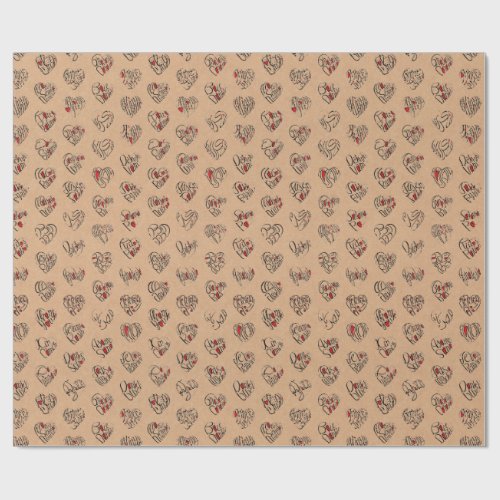
Thank you & hearts in 44langs as BK♡shaped pattern Wrapping Paper
The design is based on heart-shaped designs of thank you and some hearts from 44 different countries. Each “thank you” is polite, formal, or more emphatic than
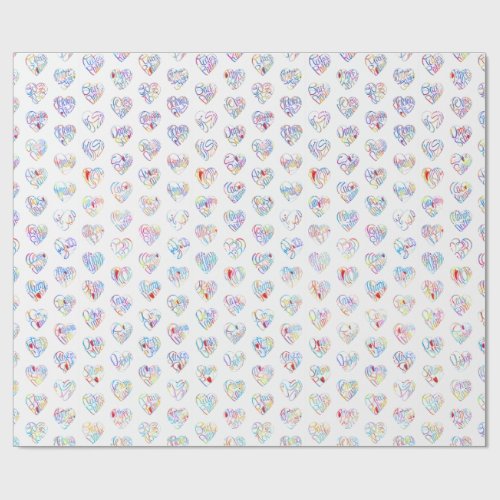
Thank you & heart in 44langs as ♡shaped DC pattern Wrapping Paper
The design is based on heart-shaped die cutting designs of thank you and a heart from 44 different countries. Each “thank you” is polite, formal, or more emphat
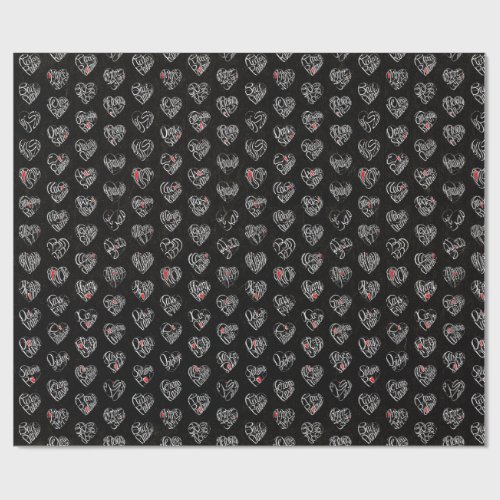
Thank you & heart in 44langs as WH ♡shaped pattern Wrapping Paper
The design is based on heart-shaped designs of thank you and a heart from 44 different countries. Each “thank you” is polite, formal, or more emphatic than a ge
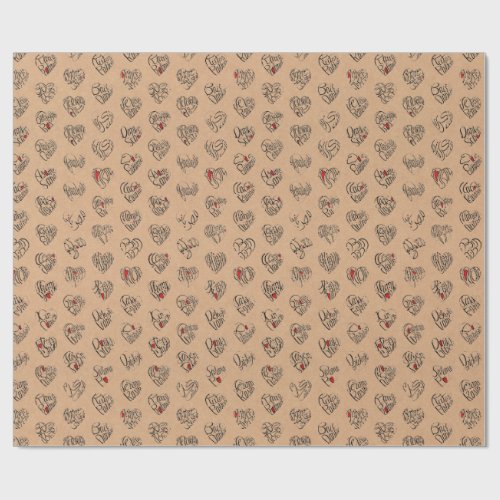
Thank you & heart in 44langs as BK ♡shaped pattern Wrapping Paper
The design is based on heart-shaped designs of thank you and a heart from 44 different countries. Each “thank you” is polite, formal, or more emphatic than a ge
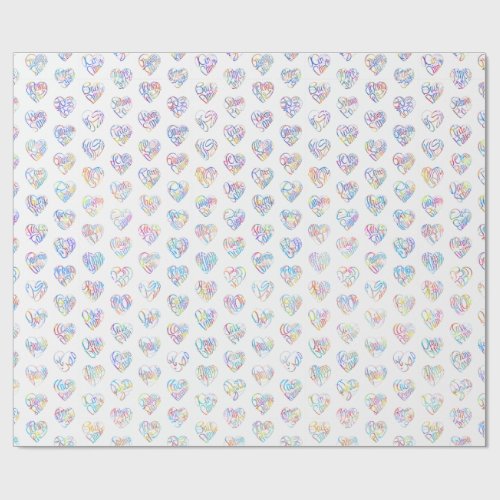
Thank you in 44langs as heart shaped DC pattern Wrapping Paper
The design is based on heart-shaped and die cutting designs of thank yous from 44 different countries. Each “thank you” is polite, formal, or more emphatic than
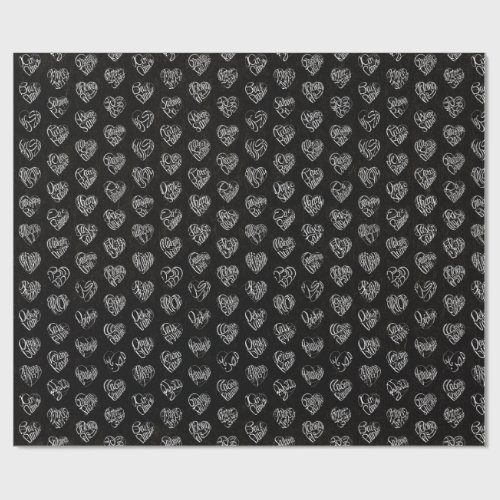
Thank you in 44langs as white heart shaped pattern wrapping paper
The design is based on heart-shaped designs of thank yous from 44 different countries. Each “thank you” is polite, formal, or more emphatic than a general thank
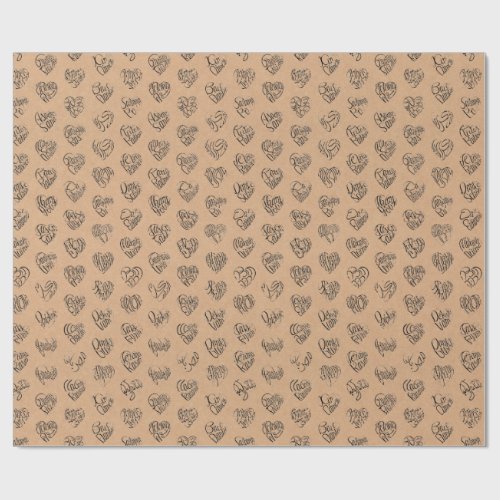
Thank you in 44langs as black heart shaped pattern wrapping paper
The design is based on heart-shaped designs of thank yous from 44 different countries. Each “thank you” is polite, formal, or more emphatic than a general thank
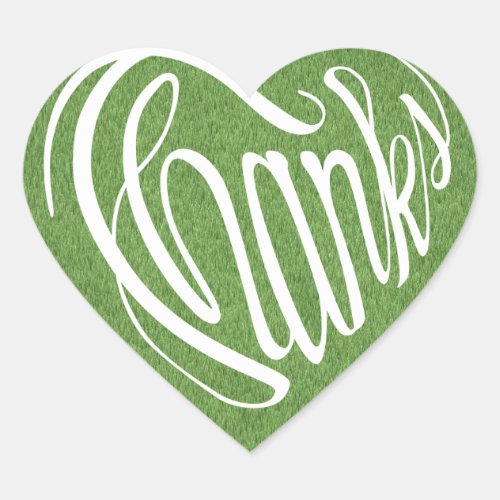
Heart shaped thanks in 6 languages heart sticker
There are several different six languages of the same type. Other languages(Spanish, French, German, Japanese Hiragana, and Portuguese female), text color(black
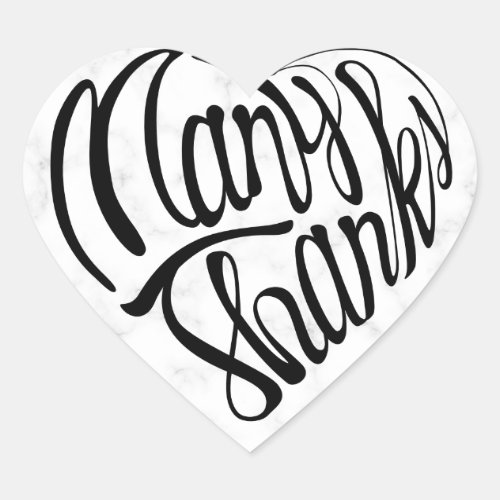
Heart shaped many thanks in 4 languages heart sticker
A simple way to say many thanks. There are several different languages of the same type. Other languages(French, Deutsch and Japanese Hiragana), text colors (wh
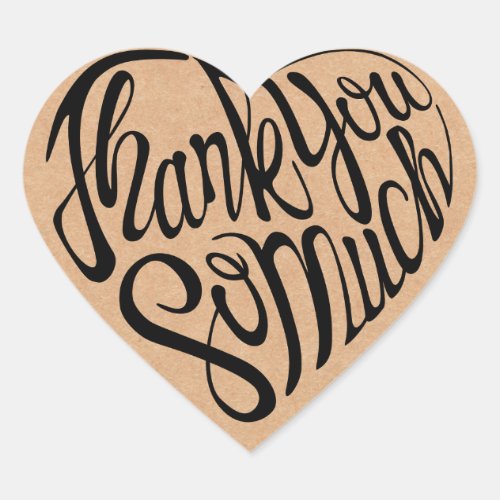
Heart shaped thank you so much in 4 languages heart sticker
A simple way to say thank you so much. There are several different languages of the same type. Other languages(Spanish, French and Japanese Hiragana), text colo
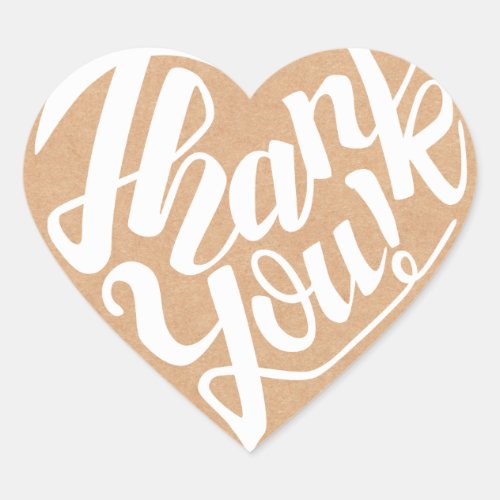
Heart shaped thank you in 8 languages calligraphy heart sticker
A simple way to say thank you. There are several different languages of the same type. Other languages(Spanish, French, German, Japanese Hiragana, Dutch, Swedis
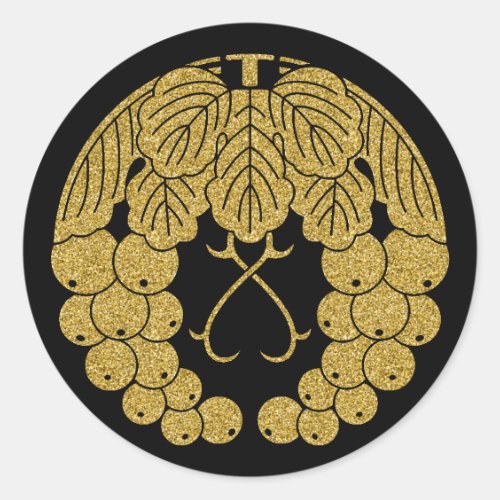
[Family Crests] Two grapes Classic Round Sticker
Family crests is "Kamon" in Japanese said. The grape crest is a very rare pattern that came from the continent.
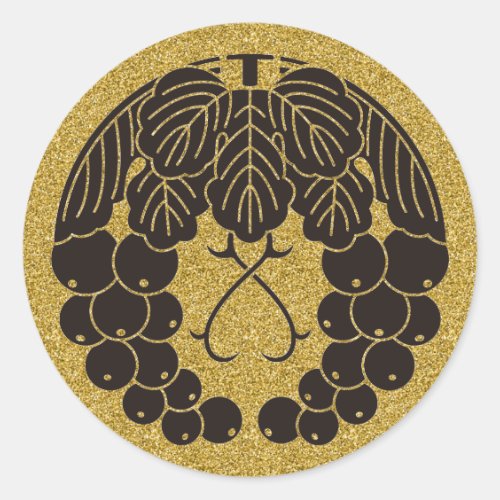
[Family Crests] Two grapes Classic Round Sticker
Family crests is "Kamon" in Japanese said. The grape crest is a very rare pattern that came from the continent.

[Family Crests] Ishida Mitsunari flag symbol Classic Round Sticker
Japanese says "Kamon". It is a Kanji characters symbol that was raised as a war flag by a military commander named Mitsunari Ishida during the Warring

[Family Crests] Ishida Mitsunari flag symbol Round Classic Round Sticker
Japanese says "Kamon". It is a Kanji characters symbol that was raised as a war flag by a military commander named Mitsunari Ishida during the Warring

[GOLD] Heart shaped gratitude in kanji on thank U Wrapping Paper
White hearts shaped gratitude in kanji which on thank you so much as golden background. This Japanese Kanji and English have identical meanings.

Heart shaped gratitude in kanji on thank you so wrapping paper
Pink hearts shaped gratitude in kanji which on thank you so much as sky-blue letters. This Japanese Kanji and English have identical meanings.

[Kanji] party Classic Round Sticker
an occasion on which people can assemble for social interaction and entertainment Japanese says Utage.

[Kanji] party as red letter Classic Round Sticker
an occasion on which people can assemble for social interaction and entertainment Japanese says Utage.

[Family Crests] Swallowtail butterfly Sticker
Japanese says "Kamon". It is a crest used by "Tairano Kiyomori", the lord of the Heike clan.

[Family Crests] Swallowtail butterfly Classic Round Sticker
Japanese says "Kamon". It is a crest used by "Tairano Kiyomori", the lord of the Heike clan.

[Family Crests] Paulownia 5-7kiri Sticker
Japanese says "Kamon". This is the famous family crest of Japan.

[Family Crests] Paulownia 5-7kiri Classic Round Sticker
Japanese says "Kamon". This is the famous family crest of Japan.

[Kanji] Battle as classic letter Classic Round Sticker
It is a Kanji that old Japanese were using. Japanese says Ikusa. It's same means "戦".

[Kanji] Battle as classic letter Classic Round Sticker
It is a Kanji that old Japanese were using. Japanese says Ikusa. It's same means "戦".